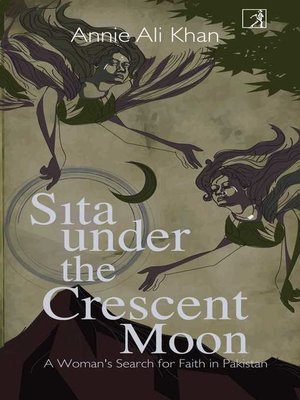
Sign up to save your library
With an OverDrive account, you can save your favorite libraries for at-a-glance information about availability. Find out more about OverDrive accounts.
Find this title in Libby, the library reading app by OverDrive.



Search for a digital library with this title
Title found at these libraries:
| Library Name | Distance |
|---|---|
| Loading... |
In present-day Pakistan, in the far corners of Lyari in Karachi, or
Hingol in Balochistan, or Thatta in Sindh, tightly knit groups of women
keep alive the folklore, songs and legends of Sati—their name for
Sita in the Ramayana. The way they sustain the attendant rituals
and practices in a nation state with a fixed idea of what constitutes
citizenship and who gets to be a primary citizen is at the heart of this
book.
In Sita under the Crescent Moon, author Annie Ali Khan travels
with women devotees—those without resources, subject to intense
violence—who, through the bravest and simplest act, that of a
pilgrimage, retrace what they remember of the goddess. Who are
these pilgrims? How did this relationship with Sati start, and why is
she so significant? How do their oral mytho-histories compare to
colonial narratives or mainstream definitions of Sati?
Even while retelling the stories of these pilgrims, Sita under the
Crescent Moon studies how worship has altered the mores of a
land—and how the sacral site, made up of clay and thread and tumble
weed, grants a woman power to fight against her circumstances.
Hingol in Balochistan, or Thatta in Sindh, tightly knit groups of women
keep alive the folklore, songs and legends of Sati—their name for
Sita in the Ramayana. The way they sustain the attendant rituals
and practices in a nation state with a fixed idea of what constitutes
citizenship and who gets to be a primary citizen is at the heart of this
book.
In Sita under the Crescent Moon, author Annie Ali Khan travels
with women devotees—those without resources, subject to intense
violence—who, through the bravest and simplest act, that of a
pilgrimage, retrace what they remember of the goddess. Who are
these pilgrims? How did this relationship with Sati start, and why is
she so significant? How do their oral mytho-histories compare to
colonial narratives or mainstream definitions of Sati?
Even while retelling the stories of these pilgrims, Sita under the
Crescent Moon studies how worship has altered the mores of a
land—and how the sacral site, made up of clay and thread and tumble
weed, grants a woman power to fight against her circumstances.







